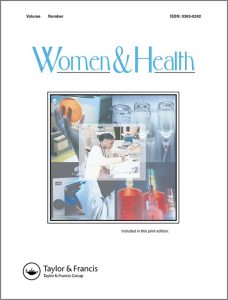Publications

Biomechanical and Viscoelastic Properties of the Achilles Tendon and Plantar Fascia in Pregnant Women with Pelvic Girdle Pain: A Case-Control Study
Authors: Nilüfer Kablan 1, Merve Can 2, Habibe Ayvaci 3, Nejla Gercek 4, Zeynep Ayyildiz Eroglu 5, Berk Özgit 3, Yasar Tatar 4
Affiliations:
- Faculty of Health Sciences, Department of Physiotherapy and Rehabilitation, Istanbul Medeniyet University, Istanbul, Turkey
- Plato Vocational School, Department of Therapy and Rehabilitation, Istanbul Topkapi University, Istanbul, Turkey
- Ministry of Health, Zeynep Kamil Women and Children Diseases Training and Research Hospital, Istanbul, Turkey
- Faculty of Sports Sciences, Marmara University, Istanbul, Turkey
- Ministry of Health, Istanbul Physical Medicine and Rehabilitation Training and Research Hospital, Istanbul, Turkey
Journal: Women & Health - June 2022, Volume 62, Issue 6, Pages 476-487 (DOI: 10.1080/03630242.2022.2085843)
-
Field & Applications:
- Medical
- Women's health
- Musculoskeletal disorder
This cross-sectional study examined the biomechanical and viscoelastic properties of the Achilles tendon (AT) and plantar fascia (PF) and analyzed their relationship in pregnant women with pelvic girdle pain (PGP).
The study was conducted in a public hospital between January and May 2021. Forty-four pregnant women (PGP+, n: 22; PGP−, n: 22) and 21 non-pregnant women were included. Navicular drop was determined and the tonus, stiffness, and creep of PF and AT were measured by myometer.
Navicular drop was significantly different between the PGP+ and the non-pregnant group in both feet (Right, p = .001; Left, p =< .001), and the PGP− and the non-pregnant group in the left foot (p = .009). At the right AT, the stiffness was found to be higher in non-pregnant women compared to the PGP+ group (p = .007). Furthermore, creep was higher in PGP− compared to the non-pregnant group (p = .016). Tissue properties of PF were similar in all groups (p > .05).
A correlation between tissue properties and the presence of PGP was not found. No findings indicated that the biomechanical and viscoelastic properties of the AT and PF were affected by the physiology of pregnancy. Moreover, no relationship was observed between the presence of PGP and the tissue properties of the AT and PF.
Keywords: muscle tonus, musculoskeletal disease, pregnancy, sacroiliac joint
In this study, there were no findings indicating that the biomechanical and viscoelastic properties of the AT and PF were affected by the physiology of pregnancy. Moreover, no relationship was observed between the presence of PGP and tissue properties of the AT and PF. The decrease in plantar arch height in pregnant women is not related to tissue properties of the PF.


